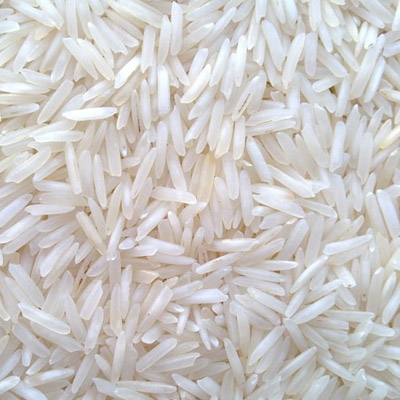Non Basmati Rice is other than basmati Rice. it is nutritionally-rich, scrumptious and long pearl like grain in Non-Basmati category.In India there are numerous varieties in rice. In fact, basmati rice is 1% production of the total rice in India.
Non-basmati rice have various kinds, shapes and sizes and some are long and slender, short and thick, some are like beads, and some may be round. Here we provide following types of Non Basmati Rices
Types of Rice and their Benefits
Rice is part of everyday Indian diet and have multiple benefits. Here we give a list of different types of Indian rice with their nutritional benefits.
Polished white rice
White rice is the easiest way to digest during any time of the day and that is why it is recommended for children and older people. White rice is consumed by most Indian families due to the high carbohydrate content and provides ample energy. It is also helps in relieving digestive disorders such as diarrhea, colitis and dysentery. And also has a sober amount of protein - every 150 grams of rice has about 5 grams of protein.
White rice is also used as a soothing powder for the skin. It is used in case of skin inflammation caused by small-pox, measles, prickly heat, burns and scalds.
But the sad part is that in the process of coming from farm to our plates, all the nutrients and vitamins from it are normally removed. This polished rice has nothing more than refined starch. However, if you buy it from a trusted local source like sri balaji impex, you may still have its goodness intact.
Brown rice
Brown rice is the best for digestive system due to high in soluble fiber and less in calories. The oil present in it is less and it increases good cholesterol , lowers blood pressure and bad cholesterol. In this,the digestion of fiber is slow leading to a controlled and slow release of sugar into the blood.and also has a lower glycemic index as compared to other grains including white rice.
Red rice
The red rice doesn’t have an appealing taste but if you want to stay fit and active, then red rice should be your choice. No one knows that red rice is rich in iron and vitamin B6. The Vitamin B6 in it helps to balance the formation of serotonin and red blood cells. Red rice can control blood sugar levels and helps in the production of DNA. In 100 grams of Red rice contains seven grams of protein and two grams of fiber.
Black rice
Black rice is a rich source of iron and Vitamin E and its prevalent in South East Asian Cultures. Black rice has one of the highest levels of anthocyanin antioxidants, even more than blueberries. It's good for people suffering from diabetes and Alzheimer's. In this anti-inflammatory properties and antioxidants content is higher than in any other type of Indian rice.
Both black and red rice have the same amounts of nutrients compared to white rice, but both are costlier than brown and white rice.



